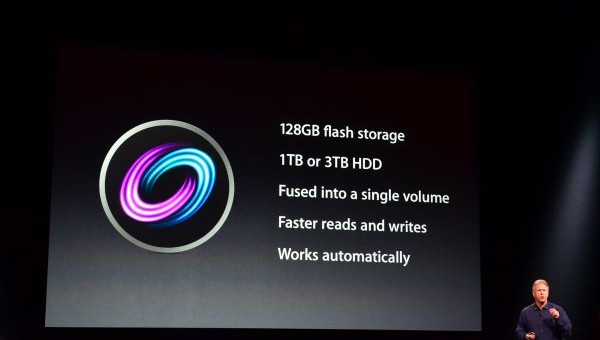On October 23, Apple announced its latest storage device titled ‘Fusion Drive’, which combines 120GB of flash storage with a regular hard drive of up to 3TB.
Fusion Drive differentiates itself from the pack by combining the best features of solid state drive (SSD) storage and hard disk drive (HDD) storage.
According to the Apple website, this setup will make disk-intensive tasks, such as booting up and launching apps, faster and more efficient, because frequently-used files and applications are kept at the ready on the SSD.
The combination of an SSD and mechanical drive allows the Fusion Drive to speed up your computer’s processes. The way it works is it watches what files, documents, and applications you open and use most regularly, and moves them to the SSD for quicker access. It also moves the stuff you aren’t using often to the HDD, doing all the leg-work for you on the sly.
Users can also manually move applications and files between the two drives to improve performance according to specific needs.
For those technical-bunnies out there wondering, the Fusion Drive is different to a caching system. As the Mac Observer puts it: “This is not a caching concept, at least not in the current use of the word. Cache would imply that the data on the SSD is duplicated, and it’s not. If you have a 1TB mechanical drive paired with the 128GB SSD, you have a 1.12 TB storage platform. This truly is the fusion of all the space on two separate disks.”
On the off-chance one of the drives fail (let’s say the HDD), it is possible to replace it with a 3rd party drive and simply reconfigure it as a Fusion Drive. However, Apple won’t cover you for that, of course, and should you lose one of the drives, you’d still lose its data.
On the other hand, if you pull the plug on your machine whilst files are in mid-move, your information will be safe, as the moves aren’t committed until the copy is complete. After the file had been moved, the original is deleted and the free space is recovered.
At the moment, the Fusion Drive is only for the new iMac and new Mac mini models.



